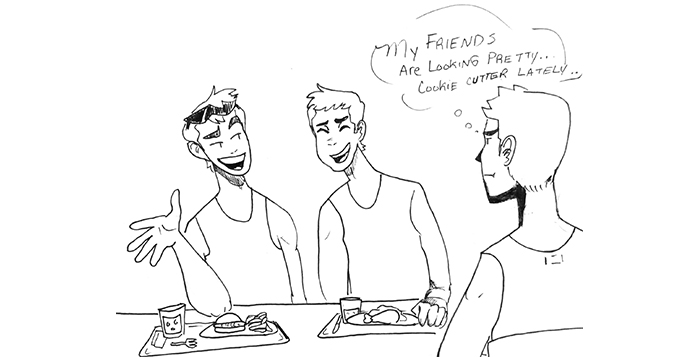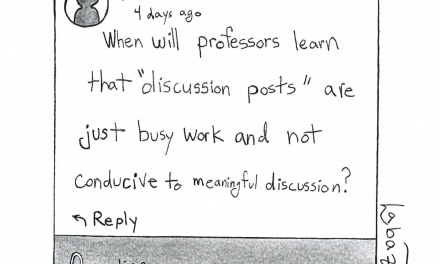I grew up in a suburban Colorado neighborhood. I was very self-conscious of my identity, the way I looked, the food I ate and the God to whom I prayed. Most of the people I knew were either white or Latino. As much as I enjoyed learning about them and their cultures, I was excited when I had the opportunity to come to Emory University. Upon acceptance, I scoured the statistics compiled by The College Board and was floored to see the ratios between the races; the statistics were starkly different from those at my local University of Colorado, Boulder (CU Boulder). CU Boulder’s student demographic consists of only 5 percent Asians, 2 percent Black or African American and 4 percent international students. Compare that to Emory’s student demographics: 22 percent Asian, 9 percent Black or African American and 15 percent international students. The diversity factor at Emory is at least three to four times greater than at my state school. (Emory URL: https://bigfuture.collegeboard.org/college-university-search/emory-university; Boulder URL: https://bigfuture.collegeboard.org/college-university-search/university-of-colorado-at-boulder ) I came to Emory partially to see the diversity and to learn more about global cultures. I also saw it as a chance to interact with my fellow South Asians, whose numbers were few and far between in Colorado.
In high school, I felt affected by that notorious social hierarchy – the popular pretty girls and jock boys, the drama geeks, the studious kids, the druggies. I would have loved to get to know different people from these different social rings, but if I tried, more often than not, I was snuffed. But my teachers, whom I adored, relayed to me their wonderful accounts of college life. They told me I would have a good time, that I would meet people who shared common interests and backgrounds. I realize it’s not the same thing, but from their comments, I assumed that the social boundaries set in high school would dissipate in college: once I entered college, I thought I would not have to worry about popularity, prettiness, appearance and other superficial things that hinder us from actually getting to know each other.
When I finally arrived on Emory’s campus, I took every opportunity to meet different kinds of people. I struck up conversations with as many people as I could. To my surprise, I felt that some people weren’t responding quite so warmly. Their cooler responses reminded me of high school all over again. Over time, it did not take long for me to realize that students at Emory have their own social hierarchy – and it was worse than in high school because it appeared to reinforce racial divisions. I could perceive this to be nothing else but self-enforced segregation.
The “Emory bubble” is how many students describe their life here, and indeed, it is quite distinct from the real world. We’re relatively comfortable in our cute, little campus. Yet I’ve realized that not only do we live in an Emory bubble, but within itself, our Emory bubble appears to contain even more bubbles! When I go to the DUC, I see a few tables with people of multiple races. But only a few. I see more tables with only people of one race. As I walk through campus, I see groups of friends walking together – they are so often of the same race.
The Emory bubbles are not just between people of different races, but also between different cliques reminiscent of high school. Generally, it appears that people involved with Greek life keep to themselves. Furthermore, I even sense that there are even socioeconomic-based cliques. Thus, our students segregate themselves between races, socioeconomic classes and Greek life. For a reason I haven’t been able to pinpoint, these boundaries feel even harder to shake than in high school. In fact, I might even say that my predominantly white high school was more likely to embrace different cultures and people than my extraordinarily diverse college.
I realize how strong the word “segregation” is. It is heavy with racial connotations and striking reminders of our violent American history. But segregation is what I see. I am not saying that it is wrong to spend time with people who are similar to ourselves. It is easy to get comfortable, but how will we develop into well-rounded individuals if we don’t expose ourselves to the unknown? Certainly, it is important that we learn more about our own histories and cultures. Nonetheless, we should also value other cultures and people.
My high school teachers also told me about the transformative conversations they had in college, which changed their minds and helped them develop more sophisticated opinions and realize new perspectives. We are lucky to be able to study in a school whose students are so global and representative of our entire world. Many people talk about their study abroad trips with great pride, and surely their experiences have been life-changing. But in a sense, our school has brought the opportunity to study abroad right here on campus. Our high numbers of international students and our diverse student demographic give us an opportunity to learn a bit about other cultures. Emory has numerous multicultural programs to encourage social mingling and the like. I must qualify that there are a great number of Emory students who overcome boundaries of race, Greek life and socioeconomic class. I commend these people and think we should do likewise.
You might say that Emory is not the only one with segregated cliques and communities. And yes, I can imagine that this same phenomenon occurs at many other universities. But we can choose to be better than that. Emory provides us with many opportunities to interact with one another in diverse environment. We can choose to be more worldly and open-minded students. We can choose to integrate ourselves to become a more whole, complete school.
The world is globalizing, with people all around the world participating in fields like business, education, science, sociality and more. Why are we holding ourselves back from progress? We should open up and engage in conversation with people who are different from us. It will enlighten us, broaden our perspectives and teach us new things, whether it is how to use chopsticks, how to cook a traditional Southern dinner or how to gracefully eat injera with a bowl of shiro.
-By Aarti Dureja
The Emory Wheel was founded in 1919 and is currently the only independent, student-run newspaper of Emory University. The Wheel publishes weekly on Wednesdays during the academic year, except during University holidays and scheduled publication intermissions.
The Wheel is financially and editorially independent from the University. All of its content is generated by the Wheel’s more than 100 student staff members and contributing writers, and its printing costs are covered by profits from self-generated advertising sales.







absolutely true. my social skills suck anyway, so it was either stay in my racial clique or have no friends at all. not for lack of trying though. unfortunately, it takes much less effort to join a racial clique at emory than it does to form a nonracial one out of thin air. I did have friends that were not of my own race, but they were “secondary” friends in a large way.